Hand-made paper from Bhutan - an old Tradition has survived.#
All photos were taken by the author in 2004 and 2005. They are part of the archive "Pictureflood Jontes"

Already the name reveals its origin in Western antiquity. Papyrus, an aquatic flowering plant, was used as the main writing material by Egyptians, Greeks and Romans alike and soon also by the other Mediterranean peoples. Meanwhile parchment – named after the ancient city of Pergamon –was used for valuable and important legal written documents and artistic illustrations in miniature painting until the early modern era.
In middle Europe paper was used for documents from the 14th century onwards and still consisted of textile fibers called rag paper. The fibers were replaced as integral part of paper by wood pulp in the 19th century for the printing of newspapers and in rotary printing.
Today the traditional production of high-end hand-made paper has become rather rare and it is mostly used for special stationary or for documents.
The situation is entirely different in Asia. Near the Himalaya mountains traditional paper is still hand-made from vegetable fibers. On the one hand this paper is used for touristic purposes in block printing in Nepal and the northern parts of India. On the other hand it is still mandatory for official correspondence in Bhutan, the last of the former Himalayan kingdoms.
The know-how concerning this production technique supposedly came from China.
There, the invention of paper took place in the 3rd century BC during the reign of the Han dynasty. First records of the production method date back to the 2nd century AD. Before the invention, words were carved into pieces of bamboo or into shells of turtles in cases of oracle writings.
For Paper however brush and ink have ever since then been used and one of the most aesthetically beautiful writing systems has been created for this purpose. In South Asia the leaves of the talipot palm had also functioned as a material to write upon. The characters were carved in, the leaves were dried and the writing was colored. A number of very old libraries for palm leave-scripts still exist in India.

The use of parchment was out of the question, especially for Buddhists, since animals would have had to die for it.
In the constitutional monarchy Dru Ü (Thunder Dragon Kingdom, Bhutan) many aspects of public life are regulated ‘from above‘.
Among many other things uniform clothing for the entire population is one of these regulations. And, of course, there is the regulation that for all correspondence with the authorities, hand-made and domestically produced paper is mandatory.
Hence the old manufacturing techniques are still thriving und the production of paper causes no environmental damage whatsoever.
In Bhutan the preservation of undisturbed nature is fundamental. For this reason, the country is one of the world’s least endangered natural areas.
Paper from Bhutan is world-famous today. It is even exported, for many artists hold the structure of this natural product in high esteem especially for water coloring.
One of the most important manufacturing plants is located in Bhutan’s captial Thimphu Thimphu, Bhutan .
In our eyes this workshop would be regarded as little more than a small business, but in Bhutan with its population of only 800,000, this factory provides a substantial share of the production of this significant cultural asset.
The paper is made from the bast fibers of the daphne plant, which is a kind of paper mulberry plant.
The bark is peeled of and the rough outer parts are removed. The inner parts are cut in to stripes and mashed until a coarse-grained matter is created.





This basic matter is then cooked and stirred for several hours in water mixed with ash until a fine-grained mash is created.
This mash is now spread thinly and evenly onto a finely-woven, wooden framed sieve.
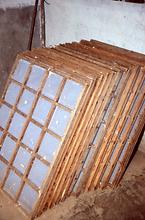
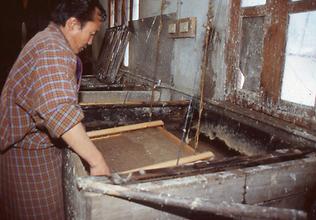
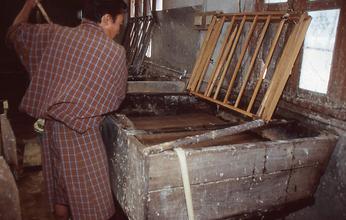
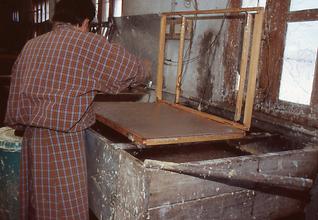




The still wet pages are then stacked and the water is drained using compression a good as possible.



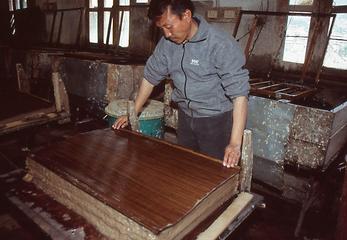
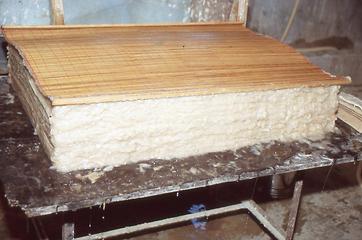
After another period of drying the pages are placed on frames covered with fabric to eliminate their remaining humidity.
Now, the paper is ready to be used for what it was made for. As one can see, no machines were used in the production process and no energy is needed except for the cooking process.








